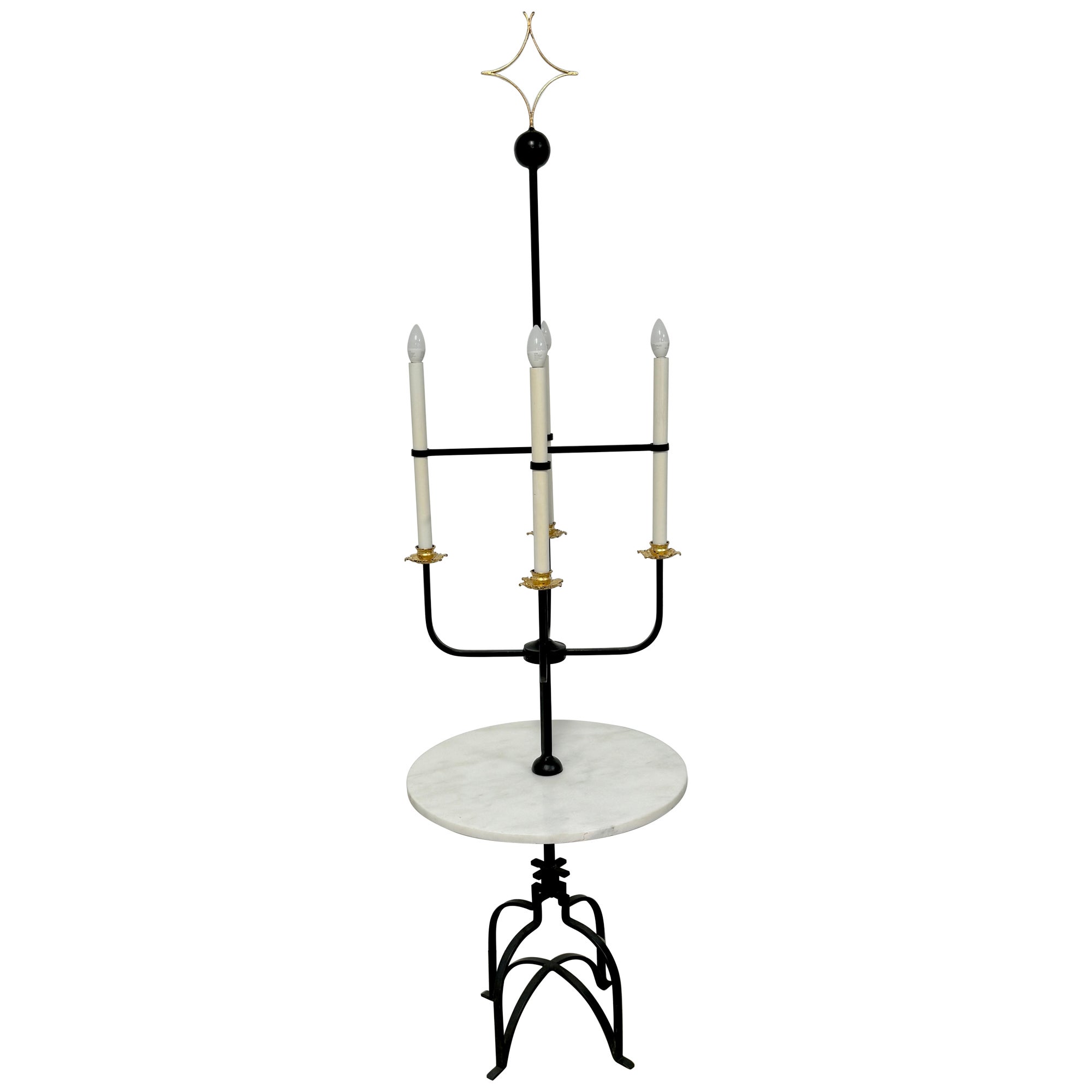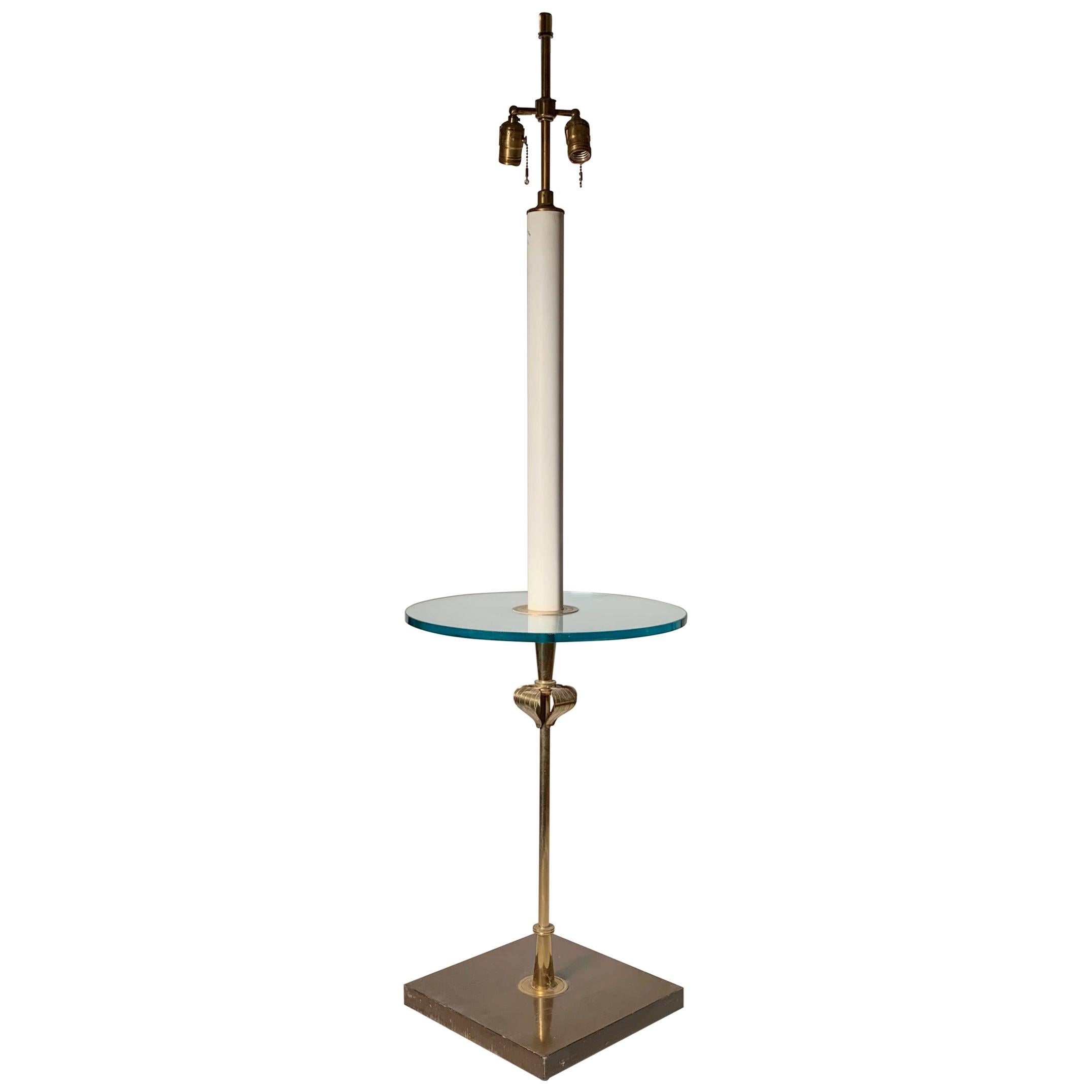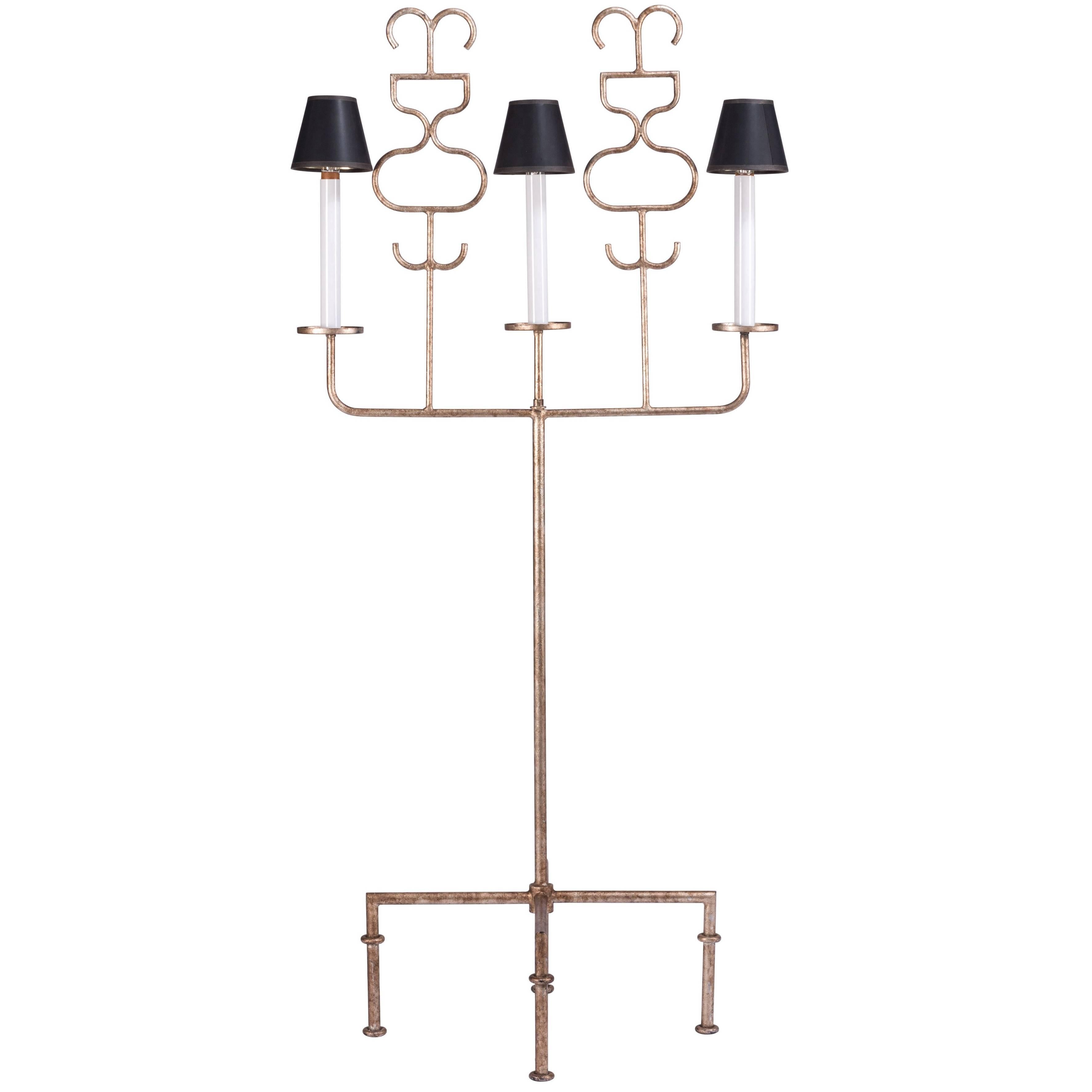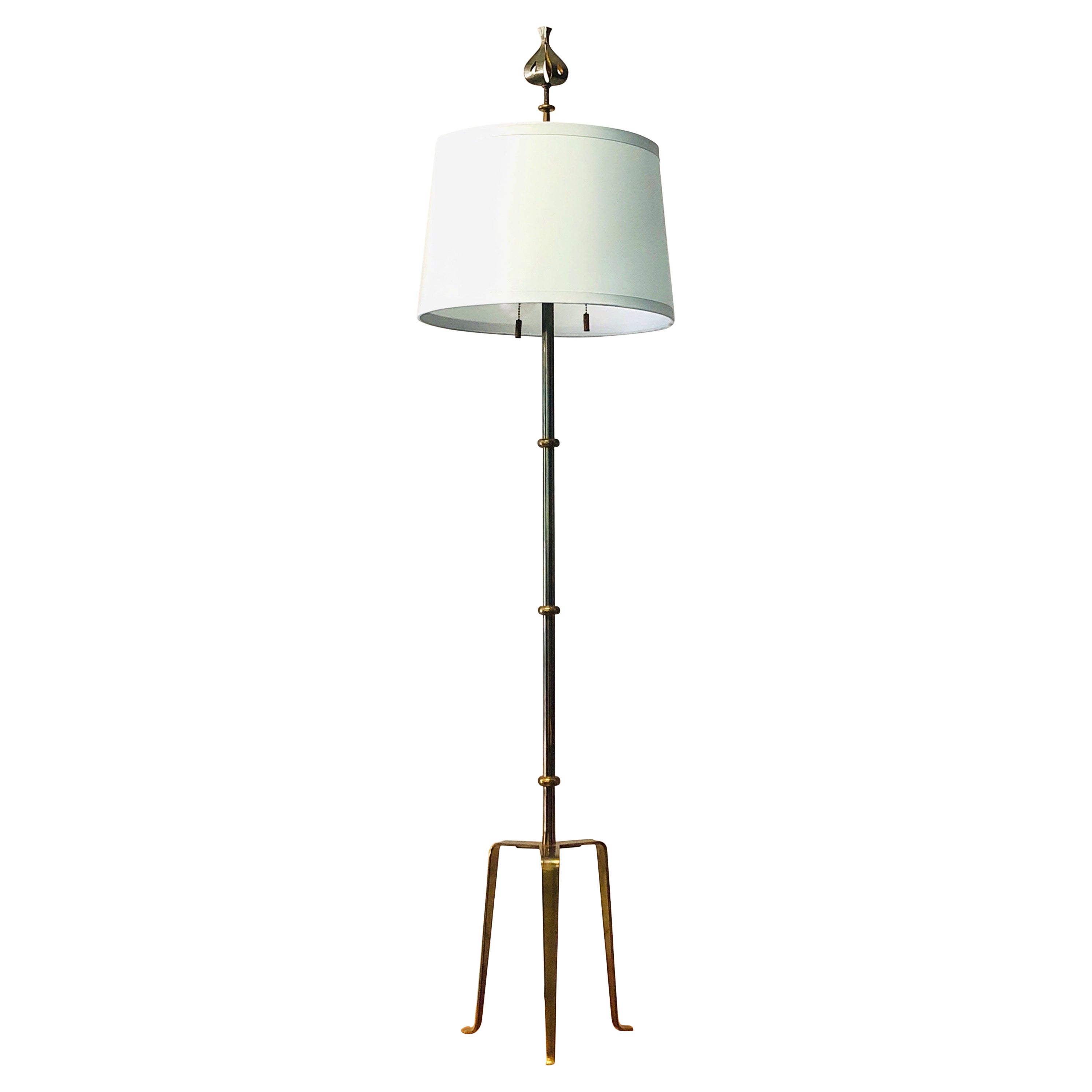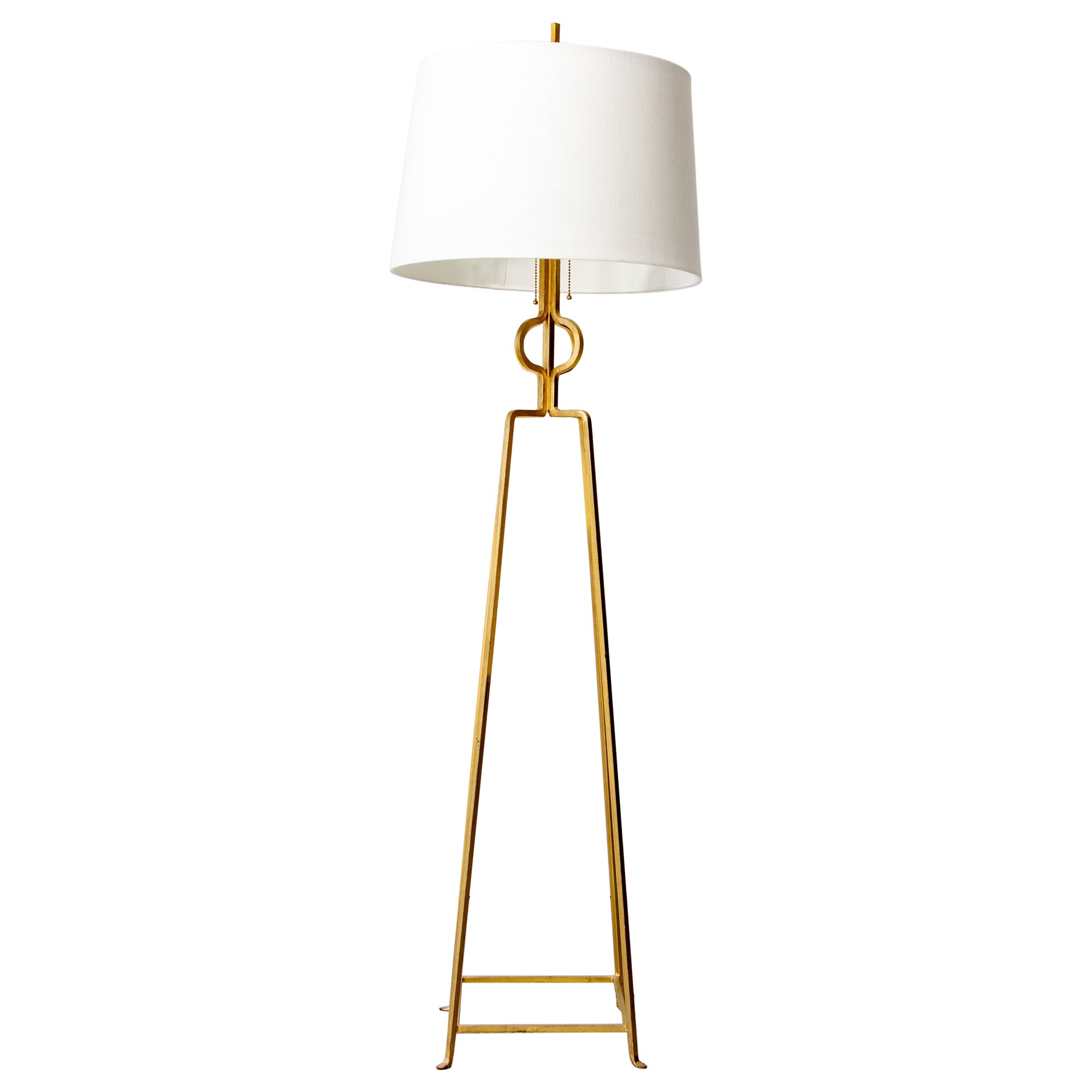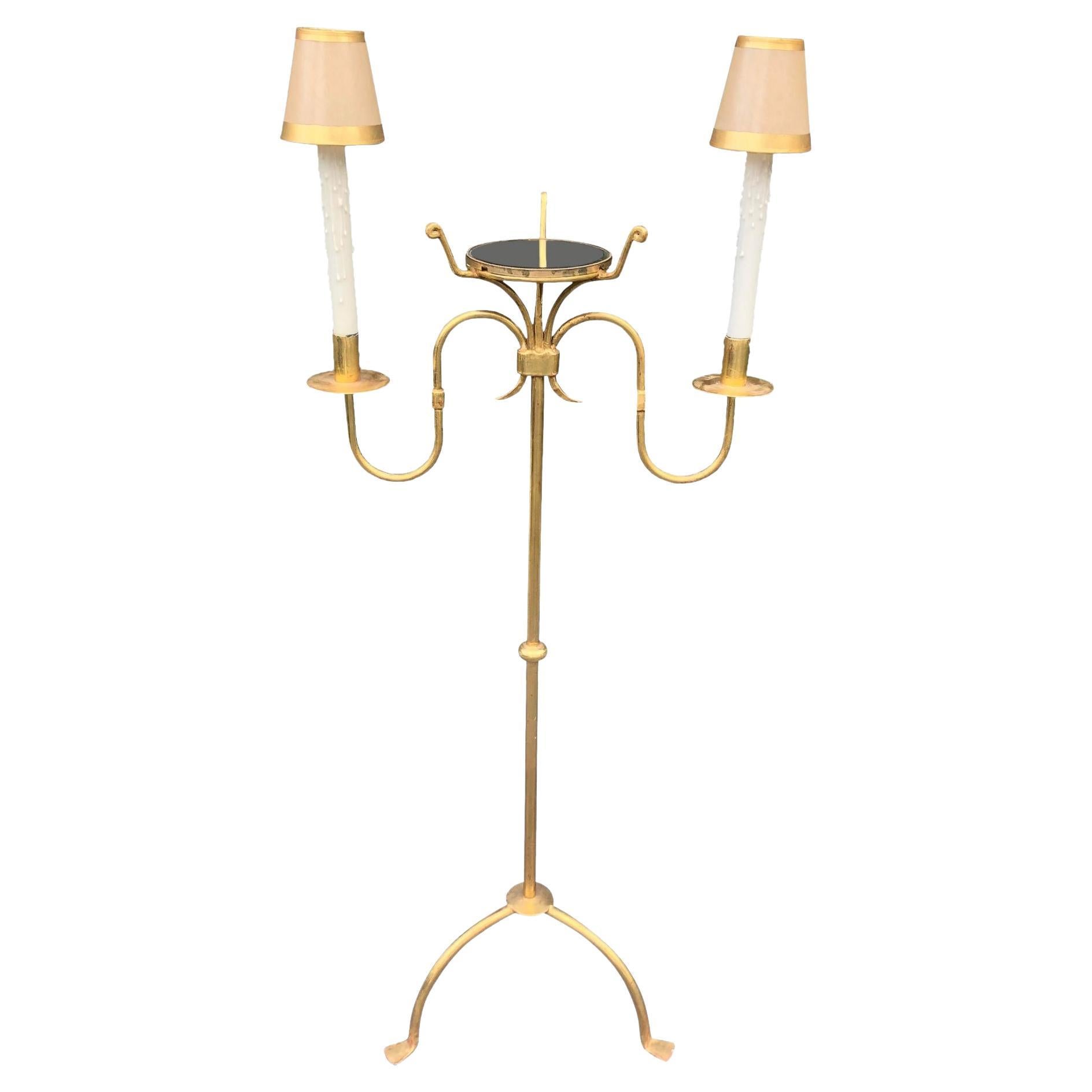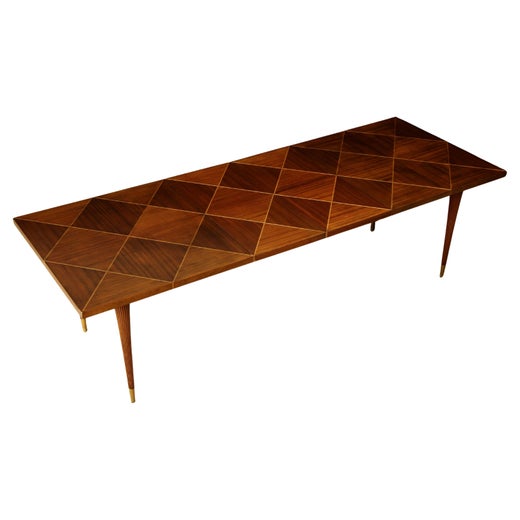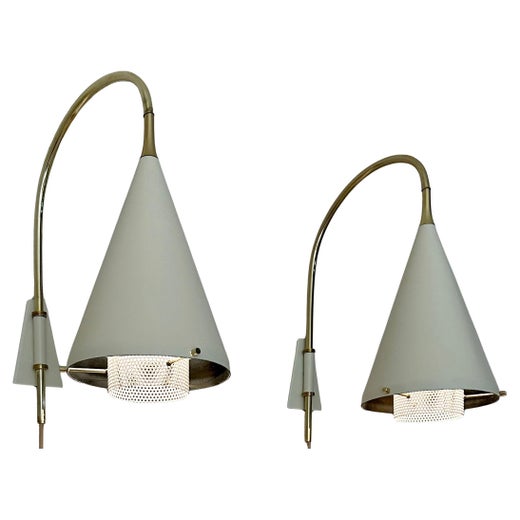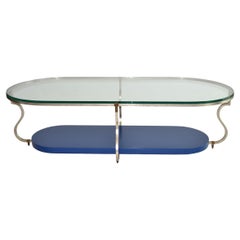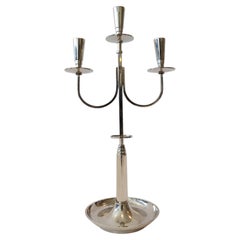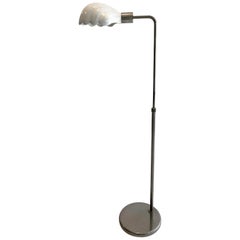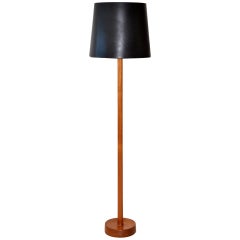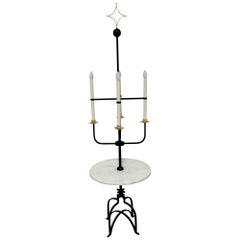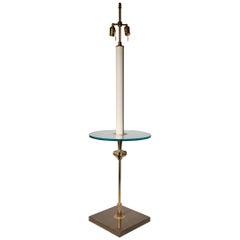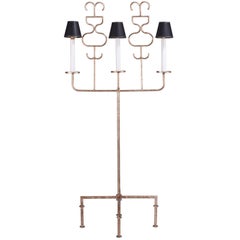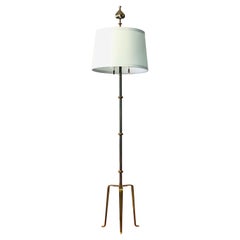Rare Floor Lamp by Tommi Parzinger, USA, 1960's
About the Item
- Creator:Lightolier (Manufacturer),Tommi Parzinger (Designer)
- Dimensions:Height: 78.5 in (199.39 cm)Width: 16 in (40.64 cm)Depth: 12 in (30.48 cm)
- Power Source:Plug-in
- Voltage:110-150v
- Lampshade:Included
- Style:Modern (Of the Period)
- Materials and Techniques:
- Place of Origin:
- Period:
- Date of Manufacture:1960s
- Condition:Wear consistent with age and use. Please contact us for a detailed condition report.
- Seller Location:Fort Lauderdale, FL
- Reference Number:Seller: re lsit 2/1/181stDibs: LU88509733523
Tommi Parzinger
German furniture designer Tommi Parzinger brought high-style modernism to the forefront. Taking a vivid, stylized approach to mid-century furniture, many of his works feature boldly colored lacquers and offbeat finishes that make his pieces stand out among the works of his peers. Despite his uniquely progressive vision, Parzinger showed equal expertise in producing fine, traditional furnishings.
Born in Munich, Parzinger moved to New York City in 1932. He began his practice in the United States by designing for the Manhattan style trailblazer Rena Rosenthal. In 1939, he established his first company, which split its focus between handcrafted silver household items — such as tea sets and barware — and home furnishings, like dining tables and cabinets. In his first year in business, Parzinger exhibited several pieces of furniture at the 1939 New York World’s Fair.
A master craftsman, Parzinger sought out the most exceptional materials for his furniture, employing the finest woods — like mahogany and walnut — as well as including custom brass hardware and pewter inlays.
His silver works presented an elevated level of style and grace. A November 1939 article in LIFE magazine described Parzinger as “the most creative original designer of silverware in the United States.”
While he was still running his own business — creating 12 to 30 new designs each year — Charak Furniture Company appointed Parzinger as its head of modern furniture design. He modernized Charak’s design approach from a more traditional form to a mid-century modern style.
In the mid-1960s, Parzinger stopped designing furniture, turning his company over to his friend Donald Cameron. He shifted his attention to paintings, which he created until his death in 1981.
On 1stDibs, find a broad selection of vintage Tommi Panzinger tables, lighting, storage pieces and more.
Lightolier
Founded in 1904 in New York and family-operated through most of its history, Lightolier was one of the pioneering American electric lighting companies, best known for its embrace of stylistic and technical innovations.
Collectors focus on vintage Lightolier lighting fixtures produced from the 1950s and into the 1970s, when an in-house design team led by Gerald Thurston — and a stellar cast of international design contributors — created an array of practical yet aesthetically lively table lamps, floor lamps, sconces and chandeliers.
Amidst the post-World War II building boom, Lightolier — the name combines “light” and “chandelier” — aggressively boosted its residential lighting division. Thurston, who was strongly influenced by the sleek designs of Gino Sarfatti and his Italian lighting firm Arteluce, towards simpler lamp designs that offered flexibility of function. His best-known designs include the Cricket task light — a lamp with an adjustable enameled metal hood that toggles on a slender bent-metal base — and the three-legged Tripod floor lamp. At the same time, Thurston had a wonderful eye for talent and sought work from some of the lesser-known greats of the era, such as Paavo Tynell, the Finnish lighting designer, who designed several brass chandeliers for Lightolier with his trademark elegant flamboyance.
And more, Thurston recognized abilities in designers not known for their work in lighting.
Edward Wormley, head of furniture design for Dunbar, produced several noteworthy chandeliers employing canisters and reflective hoods. Alvin Lustig was famed as a graphic designer. His ca. 1953 Ring ceiling fixture for Lightolier had a minimalist techno look some 30 years ahead of its time. But this was par. Designed by Michael Lax in 1964, the Lytegem high-intensity lamp — included in the permanent collection of the Museum of Modern Art — features a ball-shaped shade attached with a chromed armature to a cubic base, a form that would be widely copied in the following decade. Chandeliers designed in the early 1970s by Gaetano Sciolari, with details such as acrylic diffusers and vertical, two-bulb arms, would define the look of lighting in their day.
A look through these pages reveals just how astonishingly wide a range of lighting pieces Lightolier produced. The company never flicked off its stylistic switch.
Find a collection of vintage Lightolier lamps and other lighting fixtures on 1stDibs.
- ShippingRetrieving quote...Shipping from: Fort Lauderdale, FL
- Return Policy
More From This Seller
View AllMid-20th Century American Mid-Century Modern Coffee and Cocktail Tables
Brass, Steel
Mid-20th Century American Mid-Century Modern Candelabras
Silver Plate, Brass
Mid-20th Century Italian Mid-Century Modern Floor Lamps
Steel
Vintage 1960s Swedish Mid-Century Modern Floor Lamps
Leather, Wood
Mid-20th Century American Mid-Century Modern Armchairs
Chrome
Late 20th Century American Modern Table Lamps
Steel
You May Also Like
20th Century American Mid-Century Modern Floor Lamps
Marble, Wrought Iron
Mid-20th Century American Mid-Century Modern Floor Lamps
Brass
Vintage 1960s American Mid-Century Modern Floor Lamps
Steel
Vintage 1950s American Floor Lamps
Bronze
Vintage 1960s American Mid-Century Modern Floor Lamps
Iron, Gold Leaf
20th Century North American Mid-Century Modern Floor Lamps
Metal
